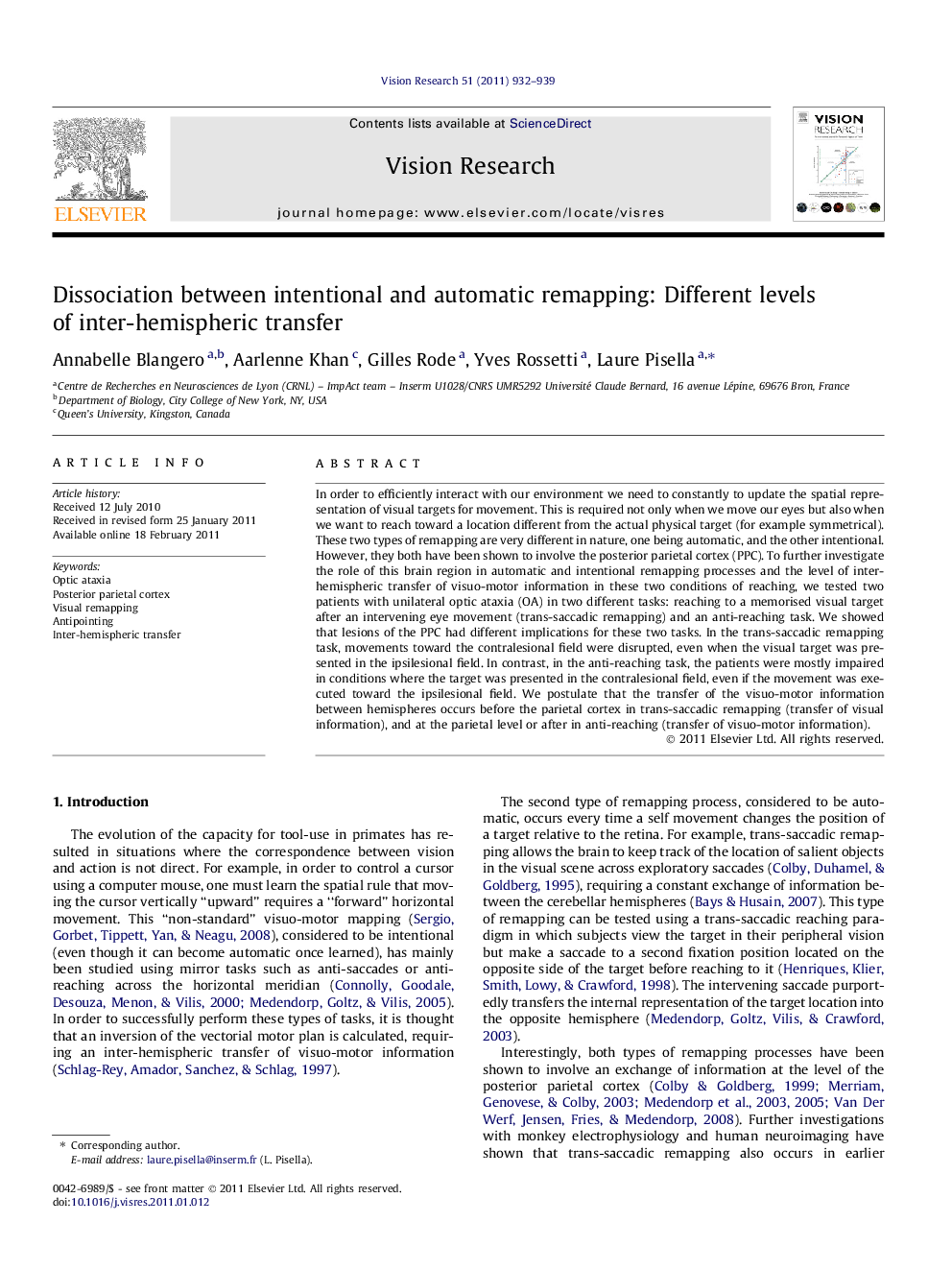| Article ID | Journal | Published Year | Pages | File Type |
|---|---|---|---|---|
| 4034374 | Vision Research | 2011 | 8 Pages |
In order to efficiently interact with our environment we need to constantly to update the spatial representation of visual targets for movement. This is required not only when we move our eyes but also when we want to reach toward a location different from the actual physical target (for example symmetrical). These two types of remapping are very different in nature, one being automatic, and the other intentional. However, they both have been shown to involve the posterior parietal cortex (PPC). To further investigate the role of this brain region in automatic and intentional remapping processes and the level of inter-hemispheric transfer of visuo-motor information in these two conditions of reaching, we tested two patients with unilateral optic ataxia (OA) in two different tasks: reaching to a memorised visual target after an intervening eye movement (trans-saccadic remapping) and an anti-reaching task. We showed that lesions of the PPC had different implications for these two tasks. In the trans-saccadic remapping task, movements toward the contralesional field were disrupted, even when the visual target was presented in the ipsilesional field. In contrast, in the anti-reaching task, the patients were mostly impaired in conditions where the target was presented in the contralesional field, even if the movement was executed toward the ipsilesional field. We postulate that the transfer of the visuo-motor information between hemispheres occurs before the parietal cortex in trans-saccadic remapping (transfer of visual information), and at the parietal level or after in anti-reaching (transfer of visuo-motor information).
Research highlights► Optic ataxia patients misreach in the visual field opposite to their parietal lesion. ► Mirror (anti-) reaching was impaired toward the ipsilesional visual field. ► This implies interhemispheric transfer of visuo-motor information at the parietal level or after. ► In contrast, trans-saccadic remapping involves early transfer of visual information.
